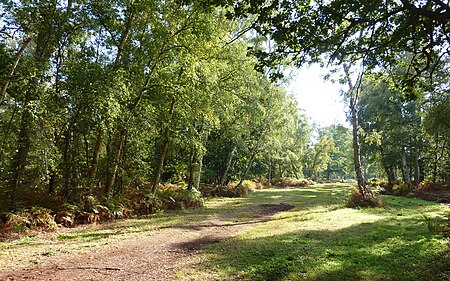Holme Fen

Holme Fen is a 269.4-hectare (666-acre) biological Site of Special Scientific Interest near Holme in Cambridgeshire. It is also a National Nature Reserve and a Nature Conservation Review site, Grade I. It is part of the Great Fen project, which aims to create a 3,700-hectare wetland wildlife area including Holme Fen, Woodwalton Fen and other areas. It is home to a variety of birds, including the Eurasian siskin, Nightingale and Lesser redpoll, and around 450 species of fungi.Holme Fen is described by Natural England as the finest example of birch woodland in lowland Britain. Part of it was a mere which was drained in the nineteenth century, and some relict wetland plants survive such as saw sedge and fen wood-rush. Two new lakes have been excavated.Holme Fen, specifically Holme Posts, is believed to be the lowest land point in Great Britain at 2.75 metres (9.0 ft) below sea level.
Excerpt from the Wikipedia article Holme Fen (License: CC BY-SA 3.0, Authors, Images).Holme Fen
Black Ham Drove, Huntingdonshire Holme
Geographical coordinates (GPS) Address External links Nearby Places Show on map
Geographical coordinates (GPS)
| Latitude | Longitude |
|---|---|
| N 52.486 ° | E -0.224 ° |
Address
Holme Fen National Nature Reserve
Black Ham Drove
PE7 3PR Huntingdonshire, Holme
England, United Kingdom
Open on Google Maps







